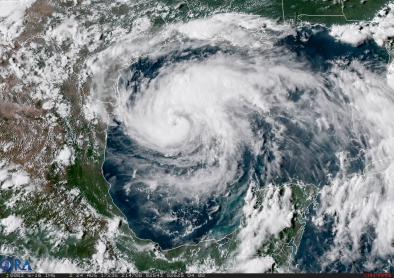Social inequalities in climate change-attributed impacts of Hurricane Harvey
Study key findings & significance
- climate change greatly increased Harvey’s flooding but also that the climate-boosted flooding hit low-income Hispanic communities the hardest.
- The finding shows that researchers can now do more than quantify how climate change led to additional homes being flooded. They can also assess how weather extremes, propelled by climate change, harm some groups more than others.
Author quotes
“The first big finding is that climate change can serve as the tipping point between flooding and not flooding. That extra few inches could mean the difference between having a very soaked lawn and having a few inches of water in your home — which could mean thousands of dollars of damages.”
Kevin Smiley, study lead author and professor of sociology and Louisiana State University
Abstract
Climate change is already increasing the severity of extreme weather events such as with rainfall during hurricanes. But little research to date investigates if, and to what extent, there are social inequalities in climate change-attributed extreme weather event impacts. Here, we use climate change attribution science paired with hydrological flood models to estimate climate change-attributed flood depths and damages during Hurricane Harvey in Harris County, Texas. Using detailed land-parcel and census tract socio-economic data, we then describe the socio-spatial characteristics associated with these climate change-induced impacts. We show that 30 to 50% of the flooded properties would not have flooded without climate change. Climate change-attributed impacts were particularly felt in Latina/x/o neighborhoods, and especially so in Latina/x/o neighborhoods that were low-income and among those located outside of FEMA’s 100-year floodplain. Our focus is thus on climate justice challenges that not only concern future climate change-induced risks, but are already affecting vulnerable populations disproportionately now.



